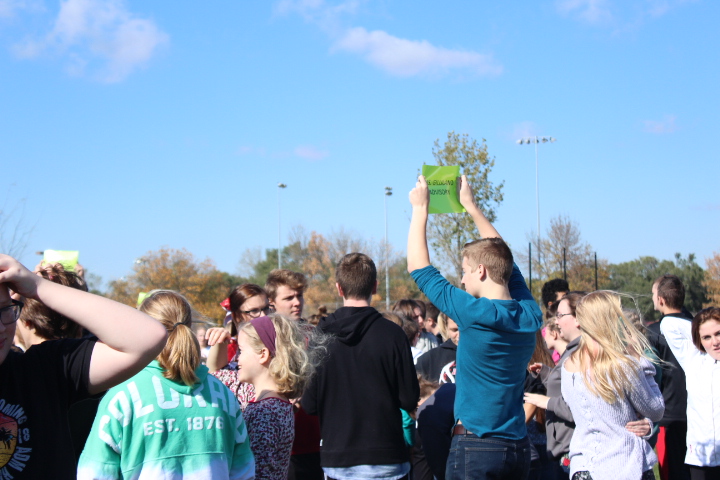OPINION: Intruder Drills
Photo by Zoe Dupuy
Students gathered at the rally point.
The February 14, 2018 shooting at Marjory Stoneman Douglas High School in Parkland, Florida, created permanent, international repercussions that we still have to manage today. Here in Iowa, the tragic losses suffered in Parkland expedited bipartisan support for tightened school security. In the months leading up to Parkland, a bill to require Iowa schools to develop comprehensive emergency plans was drafted – including annual drills for those emergencies, which include active shooter situations. That bill is now law, and several schools (including ADM) have since enacted a system of active shooter drills.
Active shooter drills are new for ADM, and the administration is still working out kinks in the procedures we follow. High school Principal Lee Griebel said, “…no system is perfect and no situation is the same” (the system referred to is the ALICE program for safety training. For more information on ALICE’s use in schools, visit https://www.alicetraining.com/our-program/alice-training/k12-education/). Our reactions to controlled scenarios can never compare to our reactions to an actual active intruder, which is why in order to prepare for a broad variety of scenarios, our shooter drills need to emulate the real thing.
One of the ways our drills can simulate a real shooting is by being conducted randomly. Currently, drills are planned down to the minute. While this might alleviate some of the stress of a shooting drill, the simple truth is that students need to be prepared for the high-stress and risk-associated decisions they’ll have to make in a real situation. The reality, though, is that some students aren’t mentally prepared for the stress of a realistic shooter drill and wouldn’t benefit from unplanned drills.
I believe that, until our school is ready for completely unplanned drills, we should participate in two different types of drills – a “controlled” drill and an “uncontrolled” drill. For controlled drills, students and staff would know what day and what time the drill will be conducted. This type of drill would be beneficial for practicing and improving our reactionary skills in a lower-stress environment. For an uncontrolled drill, students and staff would be told that a drill will be conducted during a certain week. This still gives some warning as to when the drill would happen, but it would also better reflect the unexpectedness of a true shooting.
Another area for improvement is our procedure for evacuating. The likelihood of any student willingly meeting at the evacuation rally point is slim, because a very large percentage of the student body agrees that herding everyone to one place is like creating a target for the shooter. My suggestion is that each advisory come up with a rally point for themselves in confidentiality, so that every student can feel assured that leaving the school during a shooting is the best decision to make.
My ideas aren’t the only ones that need to be heard. The shooting at Marjory Stoneman Douglas, the shooting at Columbine, the shooting at Sandy Hook, and any other school shootings created change for that school, but not until after lives were lost. Therefore, if you have concerns about school security or drill procedures I encourage you to make yourself heard – you could be saving the lives of your peers and educators.






